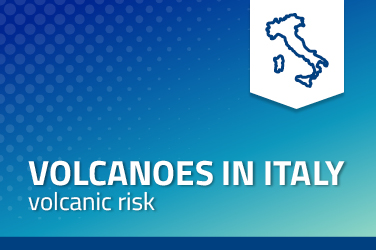Volcanoes in Italy - Volcanic risk

Amongst the criteria adopted by the international scientific community to classify Italian volcanoes, we have the Activity Status dividing them into extinct, dormant and active.
Extinct volcanoes. Volcanoes which last erupted over 10,000 years ago are defined as extinct. These include the Amiata, Vulsini, Cimini, Vico, Sabatini, Pontine Islands, Roccamonfina and Vulture volcanoes.
Dormant volcanoes.Whereas dormant volcanoes have erupted during the last 10,000 years but are currently in a period of dormancy. According to a more exacting definition, volcanoes with a current period of dormancy shorter than the longest period of dormancy registered previously are considered dormant. Here we have: Colli Albani, Phlegraen Fields, Ischia, Vesuvius, Salina, Lipari, Vulcano, Ferdinandea Island and Pantelleria. Amongst these, Vesuvius, Vulcano and Phlegraen Fields, have a very low eruptive frequency and their conduits are now obstructed. Not all the dormant volcanoes present the same risk level, both for the hazard of expected phenomena as well as for the differing extent of population under exposure. Furthermore some have a secondary vulcanism phenomena (degassing from the ground, fumaroles, etc.) which may well cause situations of risk.
Active volcanoes. Finally, volcanoes having erupted over the last few years are defined as active. These are Etna and Stromboli that frequently erupt and represent a reduced hazard at short term due to their open conduit activity.
Volcanic activity in Italy is also concentrated in the underwater areas of the Tyrrhenian Sea and Canale di Sicilia. Several submarine volcanoes are still active, others, now extinct, represent true and proper submarine mountains. Apart from the better known Marsili, Vavilov and Magnaghi volcanoes, the submarine Palinuro, Glauco, Eolo, Sisifo, Enarete volcanoes as well as the volcanic areas in the Canale di Sicilia should also be mentioned.
Sections on the principal Italian volcanoes follow.